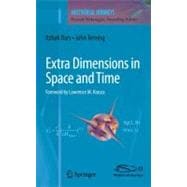
What is included with this book?
| Two-Time Physics: The Unified View from Higher Dimensional Space and Time | |
| A First Look at the Known Universe | p. 7 |
| Structure of Matter and Fundamental Forces | p. 13 |
| The Fundamentals at Subatomic Distances | p. 13 |
| Large Distances and Cosmology | p. 21 |
| What Is Space-Time? | p. 29 |
| Einstein's Relativistic View of Space-Time | p. 33 |
| Equivalence Principle, Symmetry, and General Relativity | p. 38 |
| Symmetry and Perspective | p. 43 |
| Why Higher Space or Time Dimensions? | p. 47 |
| Extra Space Dimensions | p. 49 |
| A Matter of Perspective in 2T Space-time | p. 51 |
| Why Two Times | p. 54 |
| The Shadows Allegory | p. 56 |
| The Role of Extra Space Dimensions in String Theory | p. 59 |
| Two-Time Physics | p. 67 |
| Historical Path to the Sp(2, R) Symmetry | p. 67 |
| Indistinguishable Position and Momentum and Sp(2, R) | p. 72 |
| How Does It Work? | p. 75 |
| Informal Discussion | p. 77 |
| Formal Discussion | p. 78 |
| Examples of Shadows and Hidden Information | p. 81 |
| Evidence of 4 + 2 as Subtle Effects in 3 + 1 Dimensions | p. 89 |
| H-Atom | p. 89 |
| The Fourth Space Dimension in Celestial Mechanics | p. 95 |
| Fundamental Universe as a Shadow from 4 + 2 Dimensions | p. 99 |
| The Standard Model as a 2T-Field Theory | p. 101 |
| 2T-Gravity in 4 + 2 Dimensions | p. 104 |
| Dilaton-Driven Cosmic Phase Transitions | p. 106 |
| Electroweak Phase Transition | p. 109 |
| Current Status of 2T-Physics and Future Directions | p. 113 |
| Further Reading | p. 123 |
| References | p. 123 |
| Extra Dimensions of Space | |
| The Popular View of Extra Dimensions | p. 129 |
| Einstein and the Fourth Dimension | p. 130 |
| Traditional Extra Dimensions | p. 141 |
| Einstein's Gravity | p. 146 |
| The Theory Formerly Known as String | p. 149 |
| Warped Extra Dimensions | p. 154 |
| How Do We Look for Extra Dimensions? | p. 158 |
| Epilogue | p. 165 |
| References | p. 165 |
| Extra Material: The Equations Behind the Words | p. 167 |
| Units and Coordinates | p. 167 |
| Einstein and the Fourth Dimension | p. 169 |
| Quantum Mechanics | p. 178 |
| Traditional Extra Dimensions | p. 182 |
| Einstein's Gravity | p. 185 |
| The Theory Formerly Known as String | p. 190 |
| Warped Extra Dimensions | p. 197 |
| The Maxwell Equations | p. 201 |
| How Do We Look for Extra Dimensions? | p. 208 |
| About the Authors | p. 211 |
| Index | p. 213 |
| Table of Contents provided by Ingram. All Rights Reserved. |
The New copy of this book will include any supplemental materials advertised. Please check the title of the book to determine if it should include any access cards, study guides, lab manuals, CDs, etc.
The Used, Rental and eBook copies of this book are not guaranteed to include any supplemental materials. Typically, only the book itself is included. This is true even if the title states it includes any access cards, study guides, lab manuals, CDs, etc.